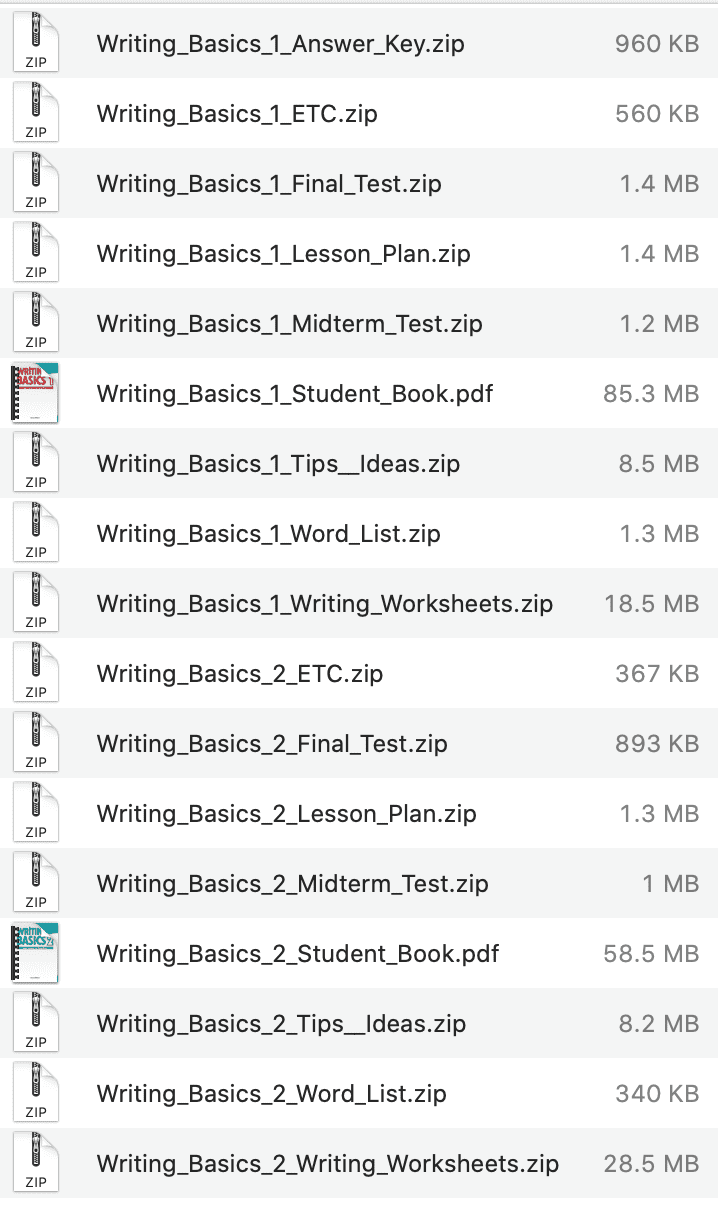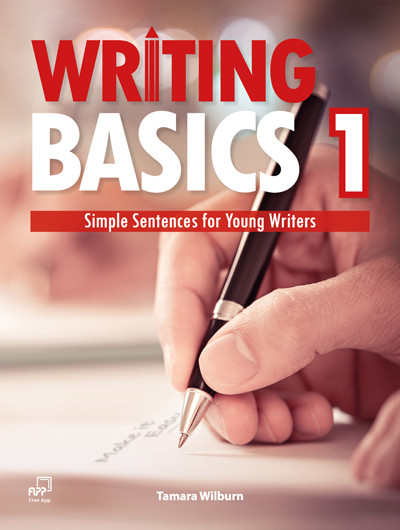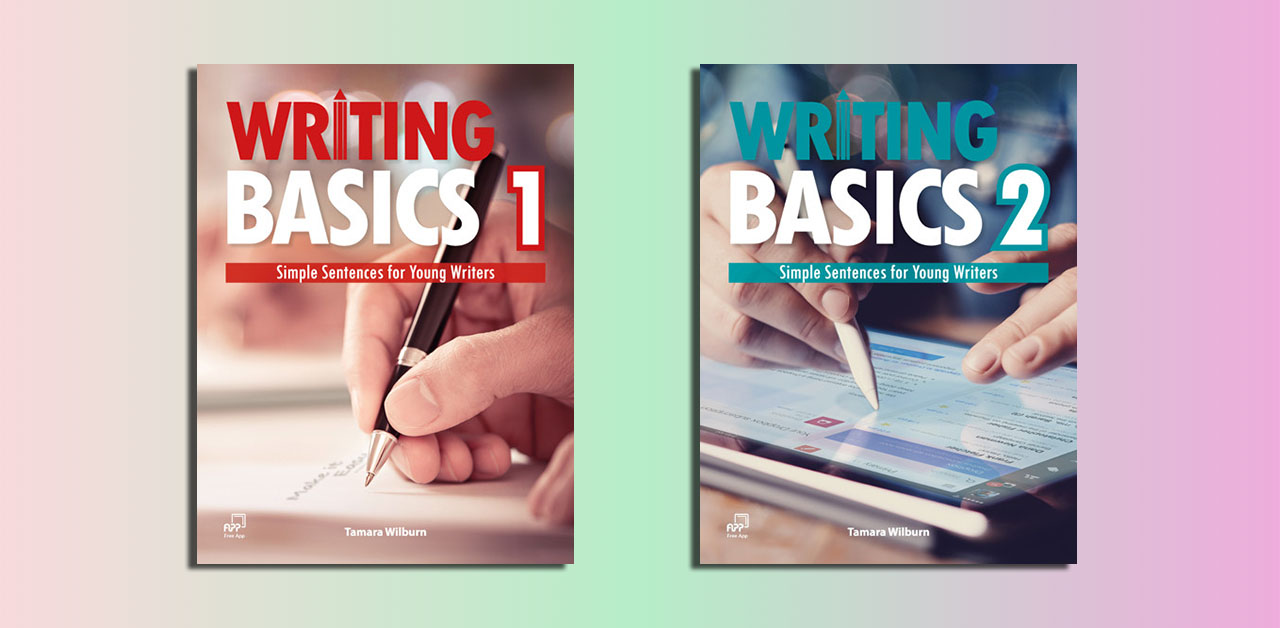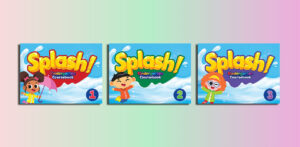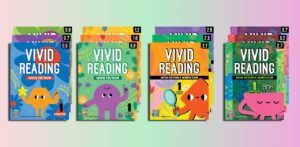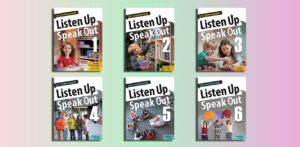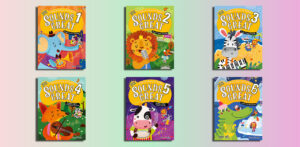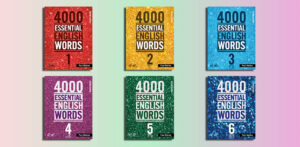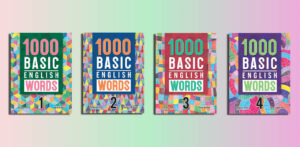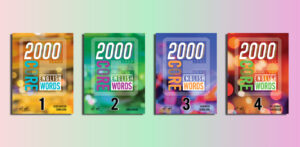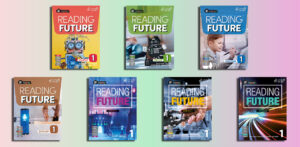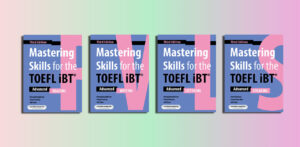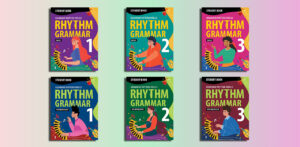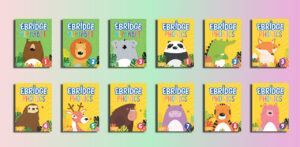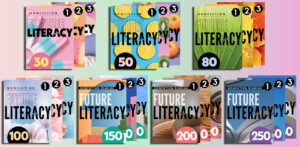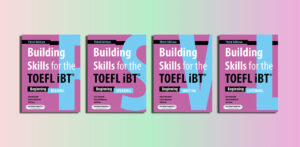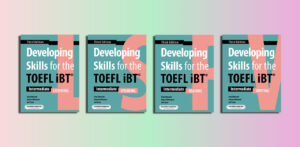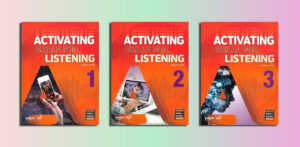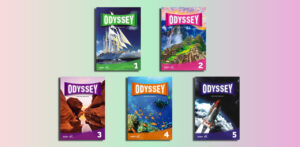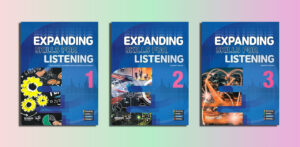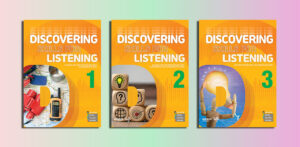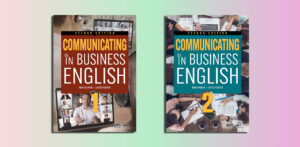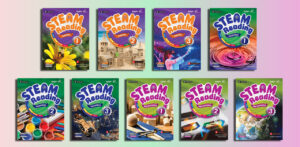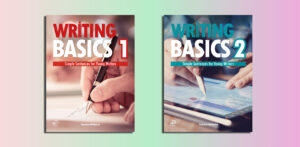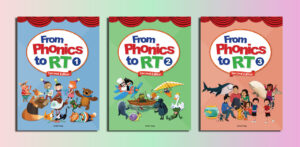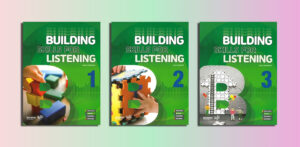Writing Basics (PDFs, Resources)
Level 1 (Pre A1)
Answer Key – ETC – Final Test – Lesson Plan – Midterm Test – Student Book – Tips Ideas – Word List – Writing Worksheet
Writing Basics 1 Student Book.pdf – Sample: Click
Level 2 (Pre A1 / A1)
Answer Key – ETC – Final Test – Lesson Plan – Midterm Test – Student Book – Tips Ideas – Word List – Writing Worksheet
Writing Basics 2 Student Book.pdf – Sample: Click
| Image | Name | Price | Buy |
|---|---|---|---|
| Writing Basics 1 (PDFs, Resources) | $6 | ||
| Writing Basics 2 (PDFs, Resources) | $6 | ||
| Writing Basics - All 2 Levels (PDFs, Resources) | $10 |
Overview of the “Writing Basics” by Compass Publishing
Contents
| ✅ Coursebook: | Writing Basics |
| ✅ Authors: | Tamara Wilburn, Alex Grant, Kayang Gagiano |
| ✅ Publisher: | Compass Publishing |
| ✅ English type: | International English |
| ✅ Levels: | Pre A1, A1 |
| ✅ Skill: | Writing |
| ✅ For: | Primary |
| ✅ Publication year: | 2019 |
“Writing Basics” is a two-book series by Compass Publishing, designed to help elementary-level English language learners develop essential writing skills. Authored by Tamara Wilburn and Kayang Gagiano, the series targets young learners at the Pre-A1 (Level 1) and Pre-A1/A1 (Level 2) CEFR levels, making it an excellent resource for beginner ESL/EFL students. With engaging, age-appropriate content and a structured approach, “Writing Basics” supports young learners in building confidence as writers.
Key Features
The “Writing Basics” series is tailored for young learners, offering the following features:
- Themed Units with Topic-Based Vocabulary: Each unit centers on a specific theme, introducing relevant vocabulary that resonates with elementary students, fostering a strong lexical foundation.
- Relatable, Everyday Themes: Content reflects real-life situations and topics familiar to young learners, making writing tasks meaningful and engaging.
- Systematic Grammar Progression: Key grammatical structures are introduced gradually, ensuring mastery of foundational concepts before advancing to more complex ones.
- Dedicated Practice Sections: Vocabulary, grammar, comprehension, and writing are covered in separate sections, allowing focused skill development.
- Colorful Illustrations: Vibrant visuals enhance comprehension and make learning enjoyable for young students.
- Gradual Task Complexity: Activities increase in difficulty, scaffolding learning and building confidence as students progress.
Structure and Content
Each book in the “Writing Basics” series spans 120 pages and is formatted in a 210×278 mm size, ideal for young learners. The content is organized into thematic units that guide students through the writing process step-by-step. Compass Publishing highlights the following components:
- Vocabulary Building: High-frequency words and phrases align with unit themes, enabling students to express themselves effectively.
- Grammar Practice: Clear explanations and exercises reinforce correct grammar usage in writing.
- Comprehension Activities: Tasks ensure students understand and apply what they’ve learned.
- Writing Exercises: Guided tasks encourage students to create sentences and short paragraphs, promoting creativity and independence.
The series also integrates speaking and listening activities to complement writing, providing a well-rounded language-learning experience. This aligns with Compass Publishing’s communicative approach, emphasizing all four language skills—reading, writing, listening, and speaking.
Educational Approach
Compass Publishing’s learner-centered philosophy shines in “Writing Basics.” The series employs a scaffolded approach, building on students’ existing knowledge while introducing new concepts. Relatable themes and practical vocabulary encourage meaningful self-expression, while colorful illustrations and varied activities cater to diverse learning styles. The gradual progression ensures students feel supported and challenged appropriately.
“Writing Basics” is a comprehensive, engaging resource for teaching young learners to write in English. Its structured progression, vibrant visuals, and focus on relatable content make it an effective tool for building foundational skills. By catering to Pre-A1 and Pre-A1/A1 learners, the series ensures accessibility for beginners while preparing them for further language development.
In summary, “Writing Basics” by Compass Publishing empowers elementary students to become confident writers through a thoughtful, learner-friendly approach. It is a valuable addition to any ESL/EFL curriculum.
Writing Basics 1 Student Book
Who is suitable for “Writing Basics”?
“Writing Basics” is a two-book series designed for elementary-level English language learners who are beginning their journey in writing. It is specifically tailored for:
- Young ESL/EFL Learners: Ideal for children in classroom settings, particularly those with minimal prior exposure to English.
- CEFR Pre-A1 (Level 1) and Pre-A1/A1 (Level 2) Students:
- Level 1 (Pre-A1) suits complete beginners focusing on basic vocabulary and simple sentence structures.
- Level 2 (Pre-A1/A1) is for learners ready for slightly more complex structures and vocabulary, transitioning toward the A1 level.
- Teachers: Educators seeking structured, engaging materials to teach foundational writing skills to young learners.
- Parents or Tutors: Those supporting early English language development at home with age-appropriate, visually appealing resources.
The series’ focus on relatable themes, gradual progression, and vibrant illustrations makes it perfect for young learners needing a supportive, accessible introduction to English writing.
Writing Basics 2 Student Book
The benefits of “Writing Basics”
“Writing Basics,” a two-book series by Compass Publishing, offers numerous benefits for elementary-level English language learners at the Pre-A1 (Level 1) and Pre-A1/A1 (Level 2) CEFR levels. Designed to foster foundational writing skills, the series provides a structured, engaging, and learner-centered approach. Below are the key benefits:
Builds Foundational Writing Skills
- The series introduces young learners to essential writing techniques, guiding them from forming simple sentences to creating short paragraphs. Its gradual progression ensures students master basic skills before advancing, fostering confidence and competence.
Engages Young Learners with Relatable Content
- Themed units focus on everyday, age-appropriate topics that resonate with children, making writing tasks meaningful and motivating. This relevance encourages students to express themselves creatively and confidently.
Enhances Vocabulary Development
- Each unit introduces high-frequency, topic-based vocabulary, helping students expand their lexical range. Clear explanations and practice activities reinforce retention and application in writing.
Strengthens Grammar Understanding
- The series systematically presents key grammatical structures, with dedicated exercises that promote accurate usage. This structured approach helps learners build a solid grammatical foundation for writing.
Supports Holistic Language Development
- Beyond writing, “Writing Basics” integrates speaking, listening, and comprehension activities, fostering a well-rounded language-learning experience. This aligns with Compass Publishing’s communicative approach, enhancing overall English proficiency.
Caters to Diverse Learning Styles
- Colorful illustrations and varied activity types (e.g., vocabulary exercises, comprehension tasks, and guided writing) engage visual and kinesthetic learners, making the material accessible and enjoyable.
Scaffolds Learning for Beginners
- Tailored for Pre-A1 and Pre-A1/A1 learners, the series offers a gentle learning curve. Tasks increase in complexity gradually, ensuring students are neither overwhelmed nor under-challenged.
Provides Teacher and Parent Support
- Downloadable resources, such as audio recordings, answer keys, and teaching guides, simplify lesson planning for educators. The e-Tutor online program offers additional digital support, while the clear structure benefits parents or tutors aiding at-home learning.
Boosts Confidence and Independence
- By offering guided practice and achievable tasks, “Writing Basics” empowers young learners to write independently, building self-assurance in their language abilities.
Prepares for Future Language Learning
- The skills acquired in “Writing Basics” lay a strong foundation for further English studies, particularly for students progressing to A1 and beyond, ensuring a smooth transition to more advanced levels.
In summary, “Writing Basics” is a valuable resource that equips young ESL/EFL learners with the tools to become confident, capable writers. Its engaging design, structured progression, and comprehensive approach make it an excellent choice for classrooms, tutoring, or home learning environments.
Effective learning strategies for “Writing Basics”
“Writing Basics,” a two-book series by Compass Publishing, is designed for elementary-level English language learners at Pre-A1 (Level 1) and Pre-A1/A1 (Level 2) CEFR levels. To maximize the effectiveness of this series, students, teachers, and parents can employ the following learning strategies to enhance engagement, retention, and skill development.
1. Leverage Themed Units for Contextual Learning
- Strategy: Use the thematic units (e.g., everyday topics like family, school, or hobbies) to connect learning to students’ lives. Encourage students to share personal experiences related to the theme before tackling vocabulary or writing tasks.
- Why It Works: Relating content to real-life contexts makes learning meaningful, improving vocabulary retention and motivation.
- Example: For a unit on “My Family,” ask students to describe their family members orally before writing sentences, reinforcing vocabulary like “brother” or “mother.”
2. Break Down Tasks into Manageable Steps
- Strategy: Follow the series’ structured progression by completing vocabulary, grammar, comprehension, and writing sections in sequence. Break writing tasks into smaller steps, such as brainstorming ideas, drafting sentences, and reviewing.
- Why It Works: The scaffolded approach of “Writing Basics” supports gradual skill-building, and breaking tasks into steps prevents overwhelm for young learners.
- Example: For a writing task, have students first list three words from the unit, then form a simple sentence with each, and finally combine them into a short paragraph.
3. Incorporate Multisensory Activities
- Strategy: Use the series’ colorful illustrations and downloadable audio resources to engage multiple senses. Pair visuals with vocabulary practice (e.g., pointing to pictures while saying words) and use audio for listening and pronunciation practice.
- Why It Works: Multisensory learning caters to diverse learning styles, reinforcing comprehension and retention for young learners.
- Example: Play the unit’s audio while students follow along in the book, then have them draw a picture of a vocabulary word and say it aloud.
4. Practice Active Vocabulary Building
- Strategy: Encourage students to actively use new vocabulary through games, flashcards, or role-plays. Create opportunities to reuse words across speaking, writing, and comprehension tasks.
- Why It Works: Active engagement with vocabulary strengthens memory and helps students apply words in writing.
- Example: Use a word wall to display unit vocabulary. Play a game where students pick a word and use it in a sentence, then incorporate it into their writing exercises.
5. Reinforce Grammar Through Contextual Practice
- Strategy: After completing grammar exercises, have students apply the structures in personalized sentences or short stories. Encourage peer or teacher feedback to correct errors gently.
- Why It Works: Contextual practice solidifies grammar understanding, and feedback builds accuracy without discouraging creativity.
- Example: For a grammar point like present simple (e.g., “I like…”), have students write three sentences about their preferences, then share them with a partner for review.
6. Encourage Collaborative Learning
- Strategy: Use pair or group activities for speaking and writing tasks, such as co-writing a short paragraph or discussing comprehension questions. Teachers can facilitate peer reviews to promote collaboration.
- Why It Works: Collaborative learning fosters communication skills and builds confidence, aligning with the series’ integrated approach to language skills.
- Example: In pairs, students can create a dialogue using unit vocabulary, then write it down and present it to the class.
7. Utilize Supplementary Resources
- Strategy: Access Compass Publishing’s downloadable materials (audio, answer keys, teaching guides) and e-Tutor online program to enhance lessons. Use these for extra practice or to tailor activities to students’ needs.
- Why It Works: Supplementary resources provide additional support, ensuring comprehensive coverage of skills and flexibility for different learning environments.
- Example: Use audio recordings for listening practice, pausing to ask comprehension questions, then follow up with related writing tasks from the book.
8. Promote Regular Review and Reflection
- Strategy: Schedule periodic reviews of previous units to reinforce vocabulary and grammar. Encourage students to reflect on their progress by comparing early and recent writing samples.
- Why It Works: Regular review prevents forgetting, and reflection boosts motivation by highlighting improvement.
- Example: At the end of each month, revisit a past unit’s vocabulary list and have students write a new paragraph using those words, noting how their writing has improved.
9. Foster Creativity in Writing Tasks
- Strategy: Allow flexibility in writing exercises by encouraging students to personalize their responses or add creative elements, like drawings or simple stories. Provide positive feedback to build confidence.
- Why It Works: Creative freedom makes writing enjoyable and encourages students to take ownership of their learning.
- Example: For a task asking students to describe a favorite place, let them draw the place first, then write a few sentences about it, sharing their work with the class.
10. Set Achievable Goals and Celebrate Progress
- Strategy: Set small, clear goals for each unit, such as learning five new words or writing a three-sentence paragraph. Celebrate achievements with praise, certificates, or small rewards.
- Why It Works: Goal-setting keeps students focused, and positive reinforcement motivates continued effort.
- Example: After completing a unit, reward students with a “Writing Star” sticker for successfully using new vocabulary in their writing.
Tips for Teachers and Parents
- Create a Supportive Environment: Offer encouragement and constructive feedback to build confidence, especially for beginners at Pre-A1 and Pre-A1/A1 levels.
- Adapt to Individual Needs: Adjust the pace or provide extra practice for students who need it, using the series’ clear structure to guide differentiation.
- Integrate Fun Elements: Incorporate games, songs, or storytelling to keep young learners engaged, aligning with the series’ vibrant, child-friendly design.
By implementing these strategies, learners can fully benefit from “Writing Basics,” developing strong foundational writing skills while enjoying the process. The series’ structured yet flexible approach makes it an ideal tool for fostering language growth in young ESL/EFL students.
Effective teaching strategies for “Writing Basics”
“Writing Basics,” a two-book series by Compass Publishing, is tailored for elementary-level English language learners at Pre-A1 (Level 1) and Pre-A1/A1 (Level 2) CEFR levels. To maximize its effectiveness in the classroom, teachers can employ the following strategies to engage young learners, reinforce foundational writing skills, and create a supportive learning environment. These strategies leverage the series’ structured design, thematic units, and supplementary resources to foster skill development and motivation.
1. Utilize Thematic Units to Build Context
- Strategy: Introduce each unit’s theme (e.g., family, school, or daily activities) with a short discussion or visual aids to activate prior knowledge. Connect the theme to students’ lives to make learning relevant.
- Why It Works: Contextualizing themes enhances engagement and helps students relate vocabulary and writing tasks to their own experiences, improving retention.
- Example: For a unit on “My Home,” show pictures of different rooms and ask students to name items they see in their own homes before introducing unit vocabulary.
2. Scaffold Learning with the Series’ Structure
- Strategy: Follow the series’ progression—vocabulary, grammar, comprehension, and writing—in sequence, breaking each section into mini-lessons. Provide clear instructions and model tasks before students work independently.
- Why It Works: The series’ scaffolded approach supports gradual skill-building, and modeling ensures young learners understand expectations, especially at Pre-A1 and Pre-A1/A1 levels.
- Example: For a writing task, demonstrate how to write a sentence using a vocabulary word and grammar point (e.g., “I have a dog.”), then guide students to create their own.
3. Incorporate Multisensory Engagement
- Strategy: Use the series’ colorful illustrations and downloadable audio resources to engage visual and auditory learners. Combine these with kinesthetic activities, like tracing words or acting out vocabulary.
- Why It Works: Multisensory activities cater to diverse learning styles, making lessons accessible and memorable for young learners.
- Example: Play the unit’s audio for vocabulary pronunciation, have students point to matching illustrations, and then write the words on mini-whiteboards.
4. Promote Active Vocabulary Acquisition
- Strategy: Teach vocabulary through interactive methods like flashcards, word games, or matching activities. Encourage students to use new words in speaking and writing tasks to reinforce learning.
- Why It Works: Active vocabulary practice strengthens retention and builds confidence in using words contextually, aligning with the series’ focus on high-frequency words.
- Example: Create a “Vocabulary Bingo” game with unit words, then ask students to write a sentence using a word they bingoed.
5. Teach Grammar Contextually and Interactively
- Strategy: Present grammar points using examples from the unit theme, followed by interactive exercises like sentence-building games or group drills. Provide opportunities to apply grammar in writing tasks.
- Why It Works: Contextual grammar teaching helps students understand usage, and interactive practice ensures engagement and retention.
- Example: For teaching present simple (“I like…”), have students form sentences in pairs about their likes, then write them in their books and share with the class.
6. Foster Collaborative Learning
- Strategy: Organize pair or small-group activities for comprehension and writing tasks, such as co-creating sentences or peer-reviewing written work. Use guided questions to facilitate discussions.
- Why It Works: Collaboration builds communication skills and confidence, complementing the series’ integrated approach to language learning.
- Example: In pairs, students can answer comprehension questions about a unit’s reading passage, then write a short paragraph together using the answers.
7. Leverage Supplementary Resources
- Strategy: Use Compass Publishing’s downloadable materials (audio, answer keys, teaching guides) and e-Tutor online program to enrich lessons. Incorporate these for listening practice, homework, or differentiated instruction.
- Why It Works: Supplementary resources enhance lesson planning and provide additional practice, ensuring comprehensive skill coverage.
- Example: Assign audio-based listening tasks for homework, then use the teaching guide to facilitate a follow-up discussion and writing activity in class.
8. Encourage Creative and Personalized Writing
- Strategy: Allow students to personalize writing tasks by incorporating their interests or experiences. Provide templates or sentence starters for beginners, gradually reducing support as confidence grows.
- Why It Works: Personalization fosters creativity and ownership, making writing enjoyable and motivating for young learners.
- Example: For a task on “My Favorite Food,” provide a starter like “I like ___ because ___,” then encourage students to add a drawing or extra sentence about their choice.
9. Implement Formative Assessment and Feedback
- Strategy: Use regular, low-stakes assessments (e.g., quizzes, writing samples) to monitor progress. Provide specific, positive feedback, focusing on one or two areas for improvement to avoid overwhelming students.
- Why It Works: Formative assessment tracks development, and constructive feedback builds skills without discouraging beginners.
- Example: Collect short writing tasks weekly, highlight correct vocabulary use, and suggest one grammar correction, such as adding “s” for plurals.
10. Create a Supportive and Motivating Environment
- Strategy: Celebrate progress with praise, certificates, or a class display of written work. Set achievable goals for each unit, such as writing three sentences, and acknowledge when goals are met.
- Why It Works: A positive environment boosts confidence and motivation, critical for young learners at early CEFR levels.
- Example: Create a “Writer of the Week” board showcasing a student’s improved writing, and reward the class with a fun activity after completing a unit.
Additional Tips for Teachers
- Differentiate Instruction: Adapt tasks for varying proficiency levels within the class. For example, Pre-A1 students may focus on single sentences, while Pre-A1/A1 students can attempt short paragraphs.
- Integrate Technology: Use the e-Tutor program or interactive whiteboards to make lessons dynamic, such as displaying illustrations for vocabulary games.
- Maintain Consistency: Establish a routine for each unit (e.g., vocabulary introduction, grammar practice, writing task) to provide structure and predictability for young learners.
By applying these teaching strategies, educators can fully harness the potential of “Writing Basics” to develop young learners’ writing skills. The series’ engaging content, clear progression, and supportive resources make it an ideal tool for creating effective, enjoyable, and impactful ESL/EFL lessons.

